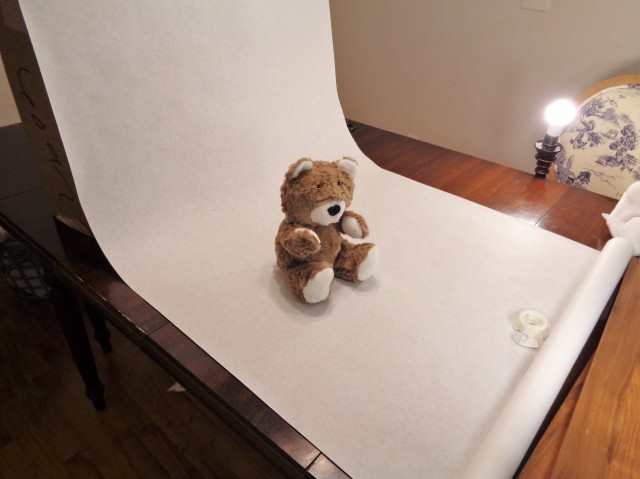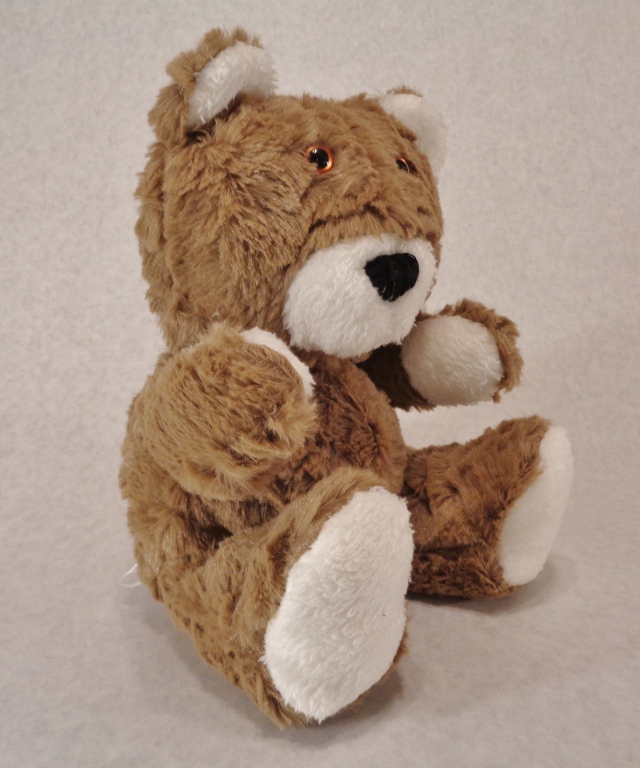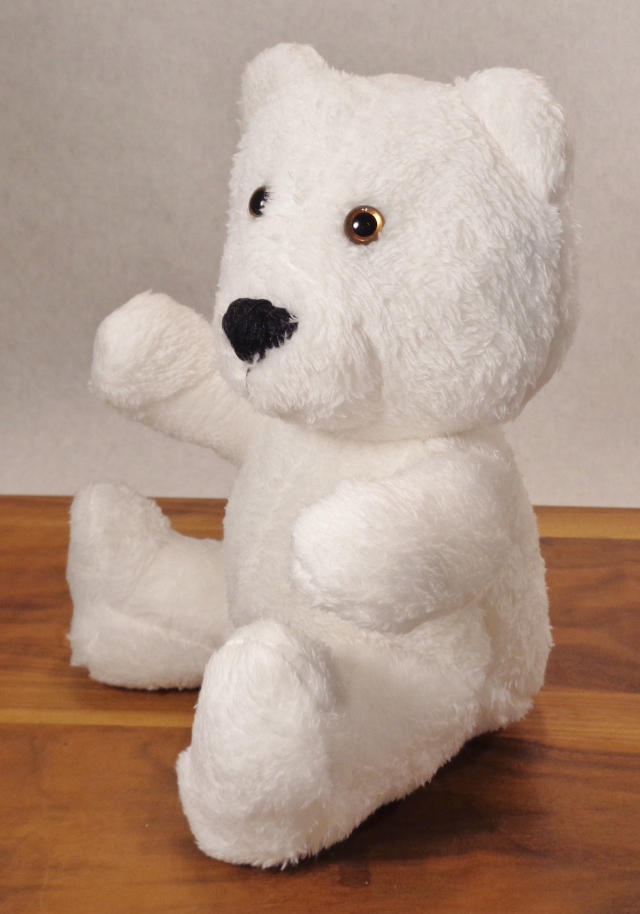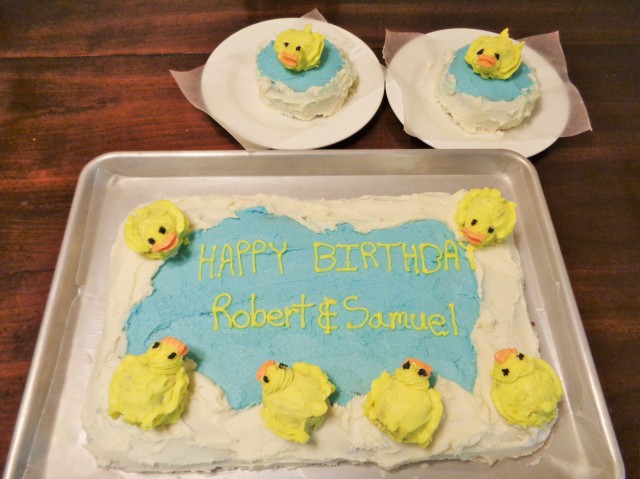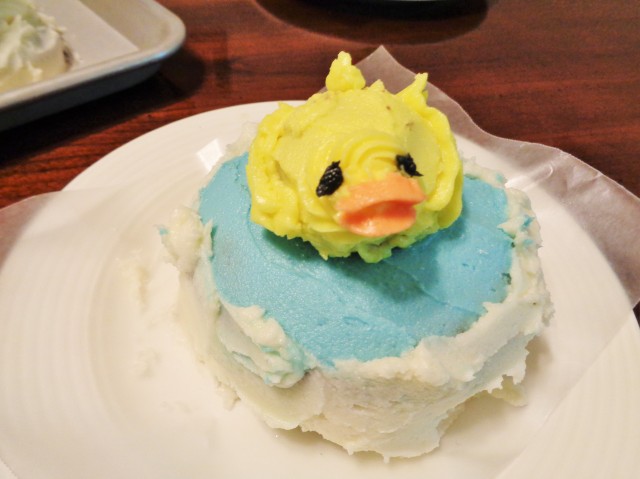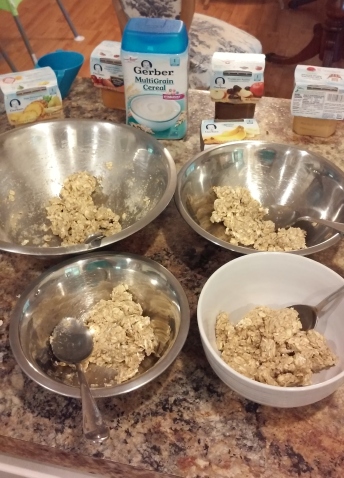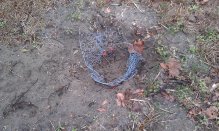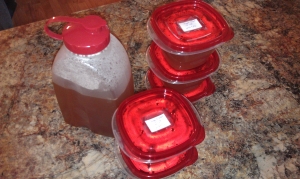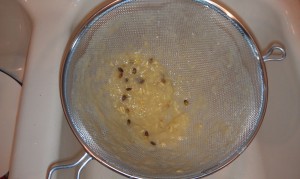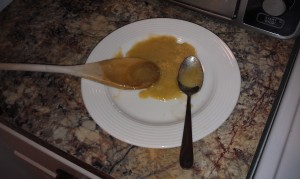Hello all! It has been a very long time since I last posted. Lots of health issues and life changes-all resulting in a very long story that I will spare you from. So, shall we get right back to posting? One thing you should know–hubby and I recently started our family, with twin boys! Like I said, lots of life changes….
Our boys are now three months old and are cloth diapered. It’s amazing how much backlash we’ve received on this topic–and from people who have never even seen a cloth diaper, much less ever used one! We were told there was no way we could ever cloth diaper twins, that the extra laundry would be all-consuming, and that having to deal with all that poop would be too gag-inducing. They were wrong. Here is our story.
My husband describes me as half hippie, half redneck. As such, I’ve always been interested in cloth diapers as a way to both save money, save the environment, and save sensitive babies from having lots of chemicals on their sensitive areas. When we found out I was pregnant, we were just coming out of a long, dramatic health crisis and were about to start on a long, dramatic money crisis as a direct result of it. I crunched the numbers and determined that cloth diapers were really the only financially solvent option. For the cost of three months of disposable diapers, we could have all the cloth diapers and supplies we would need to get the kid through potty training. This was the main reason for our decision. The rest of the hippie stuff was bonus 🙂
So, the main issue to starting cloth diapers is education–disposables are so easy and everyone who has ever tended a child knows how to use them, so advice is easy to obtain. Cloth diapers are a bit new-age-y and can be difficult to navigate. There are so many different kinds of cloth diapers, and (in truth) only one kind of disposable. There is also conflicting information about how to care for the diapers. It’s very confusing at first. I was still in the throws of learning the difference between prefolds, pockets, hybrids, and all-in-ones when we went for our 18-week ultrasound to find out the sex of our baby. Turns out, it was babies–TWINS! Despite having a 9-week ultrasound that clearly showed only one blob baby, and growing and gaining weight appropriate for one baby, we were now looking at two perfectly formed baby ultrasound skeletons. Sharing our shock was our joy, and we laughed and smiled through the rest of our day, using up pretty much all our phone minutes and trying to get our head wrapped around the idea of twin boys. After a few weeks passed, I decided that we would be a prefold family.
Prefolds are so named because they are “flats” that have been conveniently folded for you. Flat diapers are just a square piece of cotton that you fold in such a way that the middle has many layers of fabric, and two ‘wings’ have fewer layers, such as 2-4-2 or 4-6-4 or something like that. Prefolds are thus, “Pre-folded”. They are the least convenient, but also the least expensive option by far–each diaper costs $1-$2, they come (generally) in three sizes although some companies make lots of sizes, and they require a waterproof cover which can be reused for several diaper changes. Because you are still basically using a flat(ish) rectangle of cloth, you must utilize on of a dozen or more types of folds. This is both good and bad, for reasons I will share below. Very few people use flat diapers anymore. You may also see fitted diapers; “fitted” diapers are just prefolds that have a few snaps and leg elastic added, and do not require you to fold them while diapering the kid.
Pocket diapers are the next step up, both in convenience and cost. Pockets consist of a waterproof cover and an inner ‘pocket’ which is designed to be stuffed with absorbent inserts and doublers. A doubler is just an extra insert–you can have two of the exact same inserts, the first will be your insert, the second your doubler. These are almost always microfiber or other synthetic materials. They are convenient because once you have stuffed them, their use is similar to a disposable–no folding or multiple pieces. The level of absorbancy is also easy to adjust, just add more or bigger inserts for nighttime and fewer or smaller inserts for daytime. Each pocket diaper is good for one diaper change and costs between $15-$18 each, plus inserts, which can run from $3-$12 each. One nice thing about pocket diapers is that most come with a disposable option–disposable inserts can be purchased for as little as $0.25 each and used when on vacation or when a washing machine isn’t available. This is a big plus to families who like to travel but want to avoid the chemicals in disposable diapers.
Hybrids are a cross between disposables and pocket diapers. They consist of a waterproof cover which can be used for multiple diaper changes and are designed to be used with a variety of liners. They lack a true pocket and so cannot be prepped ahead of time, but they have the most options: natural cloth fiber liners, synthetic liners, disposable liners. Instead of a pocket, they utilize a ‘pseudo-pocket’ which is really just a flap on the back and front of the diaper to keep the inserts in place. A hybrid cover can be used with prefolds or fitted diapers, allowing the option of future expansion into synthetics and disposable liners without having to buy different covers. They run around $10-$18 each, plus liners.
All-in-One diapers are basically cloth disposable diapers. It’s one piece, you don’t have to stuff, fold or worry about how many inserts to use. You also don’t have to un-stuff dirty liners, but they lack the ability to adjust absorbancy. They are very easy for people who don’t cloth diaper to use, because it’s exactly like a disposable. They are by far the most expensive: $20-$25 each and they are only good for one diaper change. Few people use All-in-Ones exclusively, but many people will purchase 3-4 of these just for babysitters and grandparents to use while mom and dad are away.
Keep in mind that within each of the above categories are numerous brands and options, adding to the confusion. My decision to use prefolds was mostly based on cost, but also on dependability. Just like with disposables, parents often have to shop around different brands before finding one that fits their particular baby well. All babies are different, and even the best, most expensive cloth or disposable diaper may fit poorly and cause leaks. The true benefit of prefolds, is that there are so many ways to put them on a baby. Prefolds will always work-once you find the right fold. Knowing two entirely unique babies were on the way, going with prefolds allowed me to have my entire stash purchased, prepped and ready to go before the babies arrived with the confidence of knowing I hadn’t just blown a ton of cash on a system that may work poorly for one or both babies. I also didn’t run the risk of having two separate types of diapers to keep track of–the entire system is used for both children fluidly. I just use different folds for different kids.

These are my prefolds. They come in three sizes: Preemie (5-8lbs), Infant (8-15lbs) and Regular (15-35lbs). My boys are now around 13lbs each, 3 months old and using the Infant size. The others are not sitting unused, however. The preemie size is perfect for burp / spit-up rags and face cloths. Even though my twins are using the middle size, I have been putting them in the larger Regular size diapers at night for extra absorbancy. Once they are fully in the Regular size, I can fold the Infant size diapers into thirds to use as doublers for extra absorbancy. So, all three sizes will be used for the remainder of their diapering career.

Regular size diapers are also great to use as a spit-up catcher in the crib and bassinets. Instead of waking up both babies several times a night (and day) to change the crib sheets after a spit up, I just lift the offending twin’s head to replace the diaper.
How to Diaper Using a Prefold

These are the supplies you need to change a diaper using a prefold system. It looks complicated, but it isn’t. Most people comment on how fast I can diaper a baby when they watch me do it. Just takes some practice, like all things do. Top left is the waterproof diaper cover. I use Flip covers, which are technically hybrid covers. I also own a few Econobum covers, which are pretty much the same thing just without the ‘pseudo-pocket’ (see above explanation). Top middle is a liner. This is optional. It’s just a thin strip of polyester to create a barrier between the baby’s skin and the wet diaper to prevent diaper rash. My boys are prone to rash without this liner. They cost $1 each, so I bought enough for each diaper and I haven’t had a diaper rash since. They are made by BumGenius. Top right is a cloth wipe. I use GroVia wipes. Wet diapers don’t need a wipe, and most poopie diapers only need one wipe. The most I’ve ever used for the messiest diaper is three wipes. Purchase one wipe for each diaper and you’ll be golden. Bottom left is a Snappie–most people use this instead of diaper pins nowadays. It’s a stretchy plastic ‘T’ with teeth at each point to secure the diaper. Like the cover, they are used for multiple diaper changes. The giant cloth on the bottom is the prefold diaper itself.
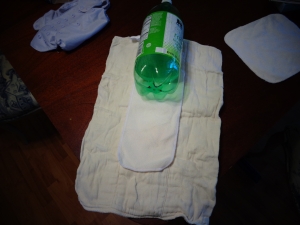
My babies are napping now, which is the only way I’m able to write. With twins, you will have a great amount of empty caffeine containers. Pretend it’s a baby. You place the liner on top of the prefold and place both under the baby.
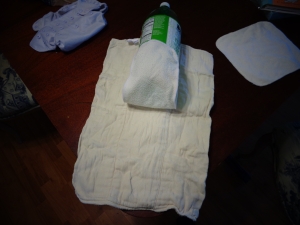
Now just flip the liner to cover the baby’s bits. This will ensure that the liner is in contact with the baby and doesn’t get tangled up the the fold you are about to do.

Now, starting at the bottom of the baby’s bum, just fold over the two ends like so.

Bring the folded portion up between the baby’s legs and cover the liner.
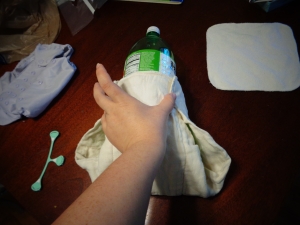
Bring the two wings on either side up to meet the front. Legs stick out of those two side holes.

Then use the Snappie to secure. Be sure that it’s snug around the legs. This is called an Angel fold. It works pretty well for most babies. There is also the Flip fold, the Newspaper fold, the Jellyroll fold, the Trifold, and so, so many others. One or more of these many folds will work for your baby, so you don’t have to worry about investing in a lot of the ‘wrong’ diapers. This is another reason why prefolds are so great for families who plan on using cloth for multiple children.

Secure the waterproof cover (make sure it fully covers the diaper) and you’re done! One of the nice things about prefolds is that-in reality-as long as all the cotton diaper material is stuffed inside the liner-no matter how badly you messed up the fold-it won’t leak. Cloth diapers really don’t leak per say, they wick. So, if a piece of cotton diaper is sticking out of the cover, it will wick up the baby’s outfit, but you’re not going to get a leak that drips unless the diaper cover is waaaaay too loose. See all those snaps? Cloth diaper covers typically come in one-size-fits-all. All those extra snaps allow one cover to fit babies from 8-35lbs, so you only have to buy one set of covers. Newborns smaller than 8lbs, and even some larger newborns since they are shaped differently at birth, will need newborn covers.
Prepping Prefold Diapers
All cloth diapers must be prepped. I don’t know much about prepping other type of cloth diapers, but I do know about prefolds.
I purchased unbleached indian prefold diapers. Chinese cotton, organic and bleached options are also available. Bleached diapers need very little prep, just one or two cycles in the washing machine and you’re ready, but they tend to wear out quicker. Prepping removed the natural oils in the cotton which prevent maximum absorbancy. Since bleached cotton is more processed, most of the oils have already been removed. The manufacturer recommended 6-8 wash cycles (with detergent) for my unbleached Indian prefolds. Now, boiling the diapers for 15 minutes is the equivalent of 3-4 washes. I washed my diapers for one cycle, boiled for 15 minutes, and washed for another two cycles. No need to dry them in between unless you are going to let them sit for a day or more. This process can be done in a day, or over several weeks. You can wash just the diapers in one big load, or add a few diapers to your normal washes here and there. Chinese cotton is a bit sturdier, lasts a bit longer, but takes longer to prep, say closer to 10 wash cycles. Chinese cotton is also a less popular option but may be the best for your family if you are wanting the diapers to survive three, four, or more children. They are the same cost as the Indian cotton. Covers, liners and wipes typically just need one wash cycle to be ready.
Prefold Diaper Care and Cleaning
Again, I don’t know much about other cloth diapers, but I do know about prefolds. Now, there is so much conflicting information out there about how to wash your diapers. So many blogs which say your diapers will be ruined if you do X, if you don’t do X, if you use this detergent, if you have hard water, line dry vs. dryer, and so on. It’s really not that complicated. Cotton prefolds are 100% cotton. It’s just cotton-it’s pretty forgiving. The waterproof liners are less forgiving, but still pretty simple.
The most important issue with cloth diapers is that they must be sterilized. This prevents bacteria from growing in them and causing rashes, smells and other problems with your baby. There are two ways to sterilize prefolds: Either wash them in hot water and dry them how you please, or wash them in cold water and hang them in the sun to dry, letting the UV sterilize them for you. One of these two options will sterilize the diapers just fine.
This is what I do: for poopie diapers, I use a diaper sprayer (which is a kitchen sink sprayer that’s attached to your toilet. Really-Google it) to spray and flush the bulk of the poop in the toilet. The sprayed off poopy diaper then joins the other wet diapers in the diaper pail. My diaper pail is just a regular trash can with a lid and lined with a waterproof diaper pail liner. I did spend the extra $10 to get a trash can with a step on the bottom that opens the lid. Really nice when one arm’s holding a kid and the other a wet diaper. Diaper covers that have been soiled along with all liners and wipes also go in the pail. There it all sits until it’s time to be washed. I wash my diapers every day just because a day’s worth of diapers for two babies is a full load for my washer. When they were using the tiny preemie diapers I washed every other day. It’s best not to go longer than that. The diaper pail lives in our bedroom. There is no smell. The liner gets washed with the diapers every 3-5 loads.
To wash, I dump everything into my washer. I’ve heard that high-efficiency and front-load washers are problematic with cloth diapers. I have neither so I can’t testify to that. I run everything through a rinse cycle first to remove the bulk of the urine and what’s left of the soiled diapers after spraying. Next depends on whether I plan on line-drying or machine drying the diapers. If line drying, I add a regular amount of detergent (a homemade detergent made from Fells Naptha soap, Borax and Washing Soda) and run it through a normal cold water cycle. This is generally the last thing I do at night, and they are ready to be hung up in the morning.

Hubby was kind enough to string up a few lines of clothesline on our front porch, sized to fit the diapers. It’s quite perfect because the porch gets a ton of sun and I don’t even have to put my shoes on to put out the diapers. Anything that is waterproof, which included diaper covers and diaper pail liners, cannot be hung in the sun, washed in hot water or dried on high heat, least the waterproofing degrades and starts to leak. I just drip-dry mine on the back porch or in the laundry room. They dry quickly. I like line-drying in the summer because I don’t have to pump extra heat into my home by washing with hot water or drying with the dryer.
If it’s going to be rainy or I won’t be around, then after the rinse I just fish out the waterproof covers and diaper pail liners and put them aside to be washed in cold water with regular clothes, and wash the prefolds in hot water with a regular amount of detergent. Then dry in the dryer.
One thing people kept commenting on was how much extra laundry cloth diapers are. I’m not quite sure what the big deal about laundry is–it’s not like I’m dragging a washboard out to the river. I dump the diapers into a machine and push a button. Oh, the horror. Yes, for me it’s a load a day, but I’ve got twins. For a single baby it would be 3 extra loads a week. I found some baskets that fit in my changing table and are large enough so that the preemie and infant sized diapers fit flat, and the regular size is folded over once, so it’s not like I spend a lot of time folding. With line-drying I don’t use hot water, and I make my own detergent so the cost to wash the diapers is minimal. I really don’t get why other people think this is such a big thing.
Cost of Prefolds
Cost is the main reason I use cloth diapers, and prefolds in particular. So, here is a breakdown on what it costs me to cloth diaper:
For the prefolds themselves, you figure out how many diapers your kid will average in a day, multiply that by how many days you plan to go between washing, and add at least 1/2 a day, perhaps even a full extra day. Most of the time you figure 12 diapers a day, washing every other day plus one day equals 36 diapers. You would then purchase 36 diapers. I have twins, so I purchased 60 preemie diapers ($1 each, washing every other day) 36 infant diapers ($1.50 each, washing every day) and 48 regular diapers ($2 each, washing every day and using to catch spit-up while sleeping). For a total of $210
For diaper covers, I have 6 Flip covers and 2 Econobum covers. The Flip covers are normally $15 but I got them on clearance for $7.50 (the color was being discontinued). The Econobum covers are also $15 each, but those two were gifts at my baby shower. I will include them in the total cost. I also have six newborn diaper covers from ProRaps, four at full price ($16/pair) and two used from Ebay for $9 with shipping. They are designed to fit below the umbilical cord and were used for the first three weeks. Total $116
I purchased 36 diaper liners to prevent diaper rashes at $1 each. I also have 60 cloth wipes at $10.50/dozen, and about 8 Snappies at $6.75/2. Total $115.50
I purchased a step-on trash can with lid ($25) to use as a diaper pail, and two diaper pail liners at $16.50 each. One for the diaper pail, one to wash. I also got a $40 diaper sprayer to connect to my toilet and a $21 wet/dry bag to store dirty diapers in while out and about (for the diaper bag). Total $119
That brings my total up-front cloth diaper investment for twins to $560.50. A singleton baby would probably cost around $400, since you will need fewer diapers and covers but still need just as many diaper pail liners, sprayers, and the like. For ongoing costs, when I line dry my diapers use my homemade detergent which I’ve calculated out at $0.015 (that’s one and one-half cents) per load, at 365 loads per year, or about $5.50/year. I don’t know exactly how much electricity it cost me to run a cold wash cycle, but I don’t have a water bill since we have a well. My geothermal heat pump has a desuperheater attachment to it, so in the summer and winter when the heat pump is working a lot I get nearly free hot water. I’m not motivated enough to calculate the cost of electricity for all the washing, but it’s not going to be a whole lot.
In contrast, at 12 disposable diapers per day per child, estimating a highly conservative $0.27 for each diaper (with wipes included), the cost to diaper my twins for their first three months would be $591, with another 2+ years to go until potty training. My initial $560.50 investment (did I mention shipping was free?) covers the next 2+ years with only the maintenance costs of $5.50 per year of detergent plus electricity. I’m not even sure I could find diapers consistently at $0.27 each, most sales I see put them at $0.30 each, for a three month cost of $657.
Also keep in mind, if hubby and I ever decide to have more children, we will have already purchased everything we need, leaving only the maintenance costs. After we are done having children, cloth diapers still retain resale value if kept in good condition. I can expect them to retain around 40% of their value. The diaper pail and sprayer won’t be resold, but everything else can be. Taking into account the non-sale cost of the liners, that’s a potential $220 return I can look forward to.
Ready to go cloth yet? 😉









